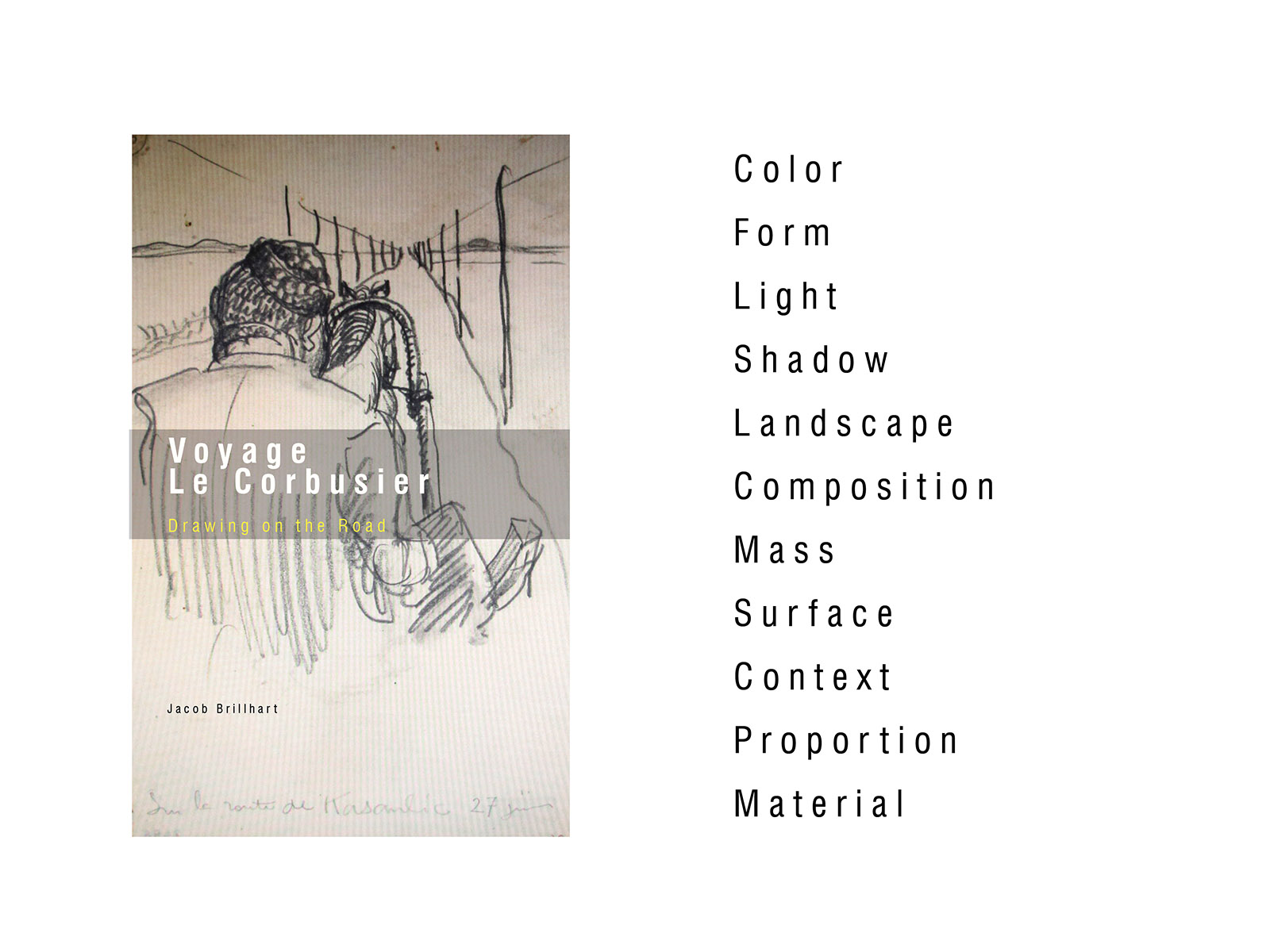Extensive research has been done on the travel drawings, sketches and watercolors of Charles-Édouard Jeanneret— otherwise known as Le Corbusier before he was Le Corbusier. The records of his youthful tours of Europe and the Mediterranean (from 1902-1911) show time and time again a gigantic appetite for travel and visual exploration, looking and drawing to see and to understand and to feel in order to know.
Analysis of his work shows how he used drawing as a method of research and how his recording process evolved over time – from his early years of beautifully detailed watercolor drawings to his later analytical sketches, and short-hand visual note-taking. In today’s digital world, this research is particularly relevant, as it shows how the process of drawing (and all of the analysis and understanding of architectural principles that are learned through it) ultimately leads to design.
Research was organized around the following questions:
1. Where did he go?
2. What did he draw?
3. How did he draw it?
4. What drawing conventions did he use?
5. What were his media?
6. What did he take away?
Outcomes of the research include:
- Theory Class on Le Corbusier’s Creative Search
Voyage Corbusier (currently under editorial review), which compiles over 140 sketches by Jeanneret between 1902-1911. To date, this is the only book that provides a succinct and inspiring compendium of Jeanneret’s early watercolor drawings and is meant to serve as a condensed travel handbook for students, architects, art and architecture enthusiasts, design historians, and travelers who not only care about Le Corbusier but also about the creative search.

Voyage Corbusier – Learning to See Architectural Persistencies

Jeanneret’s Visual Toolkit: Where he went, What he drew, How he drew it, Conventions and Media

Why Draw Today